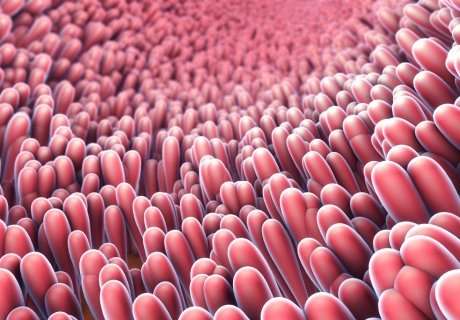New techniques needed to help children with gut disease in developing countries

Imperial experts discuss a new way of combating EED, a debilitating disease in children that is prevalent in the developing world.
Environmental Enteric Dysfunction, or EED, is widespread in developing countries and has severe negative impacts on children's physical and cognitive development. The condition is poorly understood, and the techniques currently used to study and identify the disease are invasive and difficult to administer.
Researchers from the Hamlyn Centre at Imperial College London, along with their international collaborators, have published a position paper that identifies and recommends less invasive techniques for identifying and treating the condition.
Caroline Brogan spoke to Dr Alex Thompson (AT) of Imperial's Department of Medicine, and Professor Guang-Zhong Yang (GZY), director of the Hamlyn Centre and PI for the grant, about their new paper.
Please give me some background to the current research. Why is EED important?
AT: EED is a huge problem in low income countries. Despite being little known in the UK, the condition affects vast numbers of people - particularly babies and children - and can lead to stunted growth and impaired mental development.
The condition is triggered by repeated gut infections that eventually damage the lining of the small intestine, reducing its ability to absorb nutrients and prevent bacteria from entering the bloodstream. This not only leads to malnutrition, it also reduces the effectiveness of oral vaccines such as polio.
While the condition is not normally life threatening, it can have serious detrimental effects on a child's long-term future. Because it restricts mental development, EED has a huge socioeconomic burden: it leads to poor performance in education and subsequent reduced income as an adult.
Which challenges does your report address?
GZY: Despite the condition affecting the lives of millions of people, very little is known about EED, and there is currently a dire lack of effective treatments.
What makes this problem even worse is that diagnosing the condition – or studying it to learn more about its causes and effects – involves taking tissue biopsy samples from the gut lining.
Understandably, it is very difficult to carry out this procedure in children, particularly as repeated samples are needed over long periods of time to assess the effects of medications or other treatments.
This means that there is an urgent need for new, less invasive diagnostic techniques that can help to accelerate the search for new treatments.
Our report, which was funded by the Bill & Melinda Gates Foundation, involved speaking to experts in the field, as well as reviewing existing scientific evidence. From this we highlight a number of potential techniques that may help us study the condition, and ultimately develop new treatments.
What are some examples of these less invasive techniques?
AT: We looked specifically at optical imaging technologies, which use light to visualise tissues. These could help us to diagnose and study the condition without the need to take samples from the gut lining.
We found three existing techniques that could be used immediately to study EED. These are called endoscopy, capsule endoscopy and fluorescence endomicroscopy, and all three can provide images of the gut lining.
Endoscopy, which involves inserting a tube into the intestine, is quite an invasive procedure even if biopsy samples are not taken.
Capsule endoscopy, on the other hand, involves swallowing a small camera which then wirelessly transmits live images of the intestine to a screen. This is not as easy to direct or control as a traditional tube endoscope, but it is considerably less invasive.
Flourescence endomicroscopy is also quite an invasive technique, but it provides high resolution images of gut tissue and can also measure the leakiness of the small intestine. This means that it offers considerably more information than the methods above.
There are more techniques on the horizon that could help diagnose and study EED. For example, we expect that fluorescence spectroscopy and optical coherence tomography (OCT) will be used in the next one to three years.
In the longer term, a technique called photo-acoustic imaging may also be used to study EED. This technique uses short pulses of light to generate sound waves that are recorded by a detector, and it may be possible to use it from outside of the body to measure the leakiness of large areas of the small intestine.
Overall, these technologies can provide rich and varied information about EED, and this variety could well be key to developing and testing new, less expensive treatments for the developing world.
What is the ultimate aim of the study?
GZY: Ultimately, we want to encourage multi-disciplinary collaborations to advance some of the technologies highlighted in our paper to study EED.
Equally, if a researcher is developing other new diagnostic tools that could be applied to monitor intestinal health, then we would encourage them to start thinking about applications in EED. The current lack of understanding of this disease means that new technologies in this area could potentially change the lives of millions of people.
"The potential role of optical biopsy in the study and diagnosis of environmental enteric dysfunction" was published in Nature Reviews Gastroenterology & Hepatology 15 November 2017.
More information: Alex J. Thompson et al. Position paper: The potential role of optical biopsy in the study and diagnosis of environmental enteric dysfunction, Nature Reviews Gastroenterology & Hepatology (2017). DOI: 10.1038/nrgastro.2017.147

















